
5 minute read
THE PANDEMIC ON CERTAIN ALICE HOUSEHOLDS
The inequities and barriers to financial stability were exacerbated during the dual health and economic crisis of the COVID-19 pandemic. Households in poverty and those who are ALICE (Asset Limited, Income Constrained, Employed) threshold suffered disproportionately, as shown in a regional impact survey in 2021. Typically undercounted, ALICE lives paycheck to paycheck – earning above the poverty level but less than the cost of household basics.
In 2022, United for ALICE released focused reports to shed light on the impact of the pandemic on three specific sub-groups: children, people with disabilities and veterans. Below are excerpts of the analysis regarding the impact on children.
Children In Financial Hardship
878,514 children – nearly half of all children in Virginia lived in a household with incomes below the ALICE threshold for financial survival.
878,514
Children in Virginia
33,661
Households with children with incomes below ALICE threshold
Even before the pandemic, children below the ALICE threshold experienced the ripple effect of challenges related to their parents’ work status, lack of income/savings, and family responsibilities. Children and households below the ALICE threshold bore the brunt of the pandemic’s physical and emotional toll:
54%
37% 35% OF CHILDREN OF CHILDREN OF CHILDREN lived in renter households and were rent-burdened (paid more than 35% of household income on rent) had to miss, delay, or skip preventative check-ups
28% DO NOT HAVE were not eating enough because their family couldn't afford food
HIGH SPEED INTERNET which is often essential for work and online learning
To access the full report visit: UnitedforALICE.org
Giving Back With Uwrv
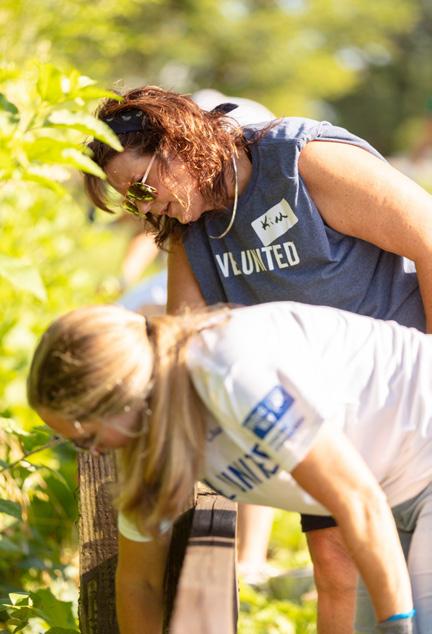
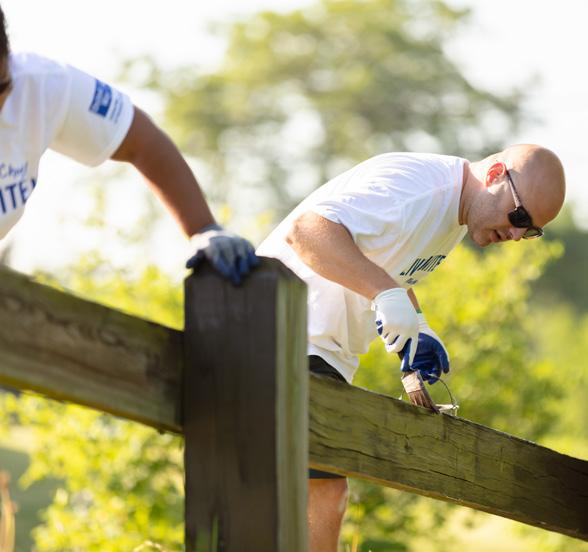
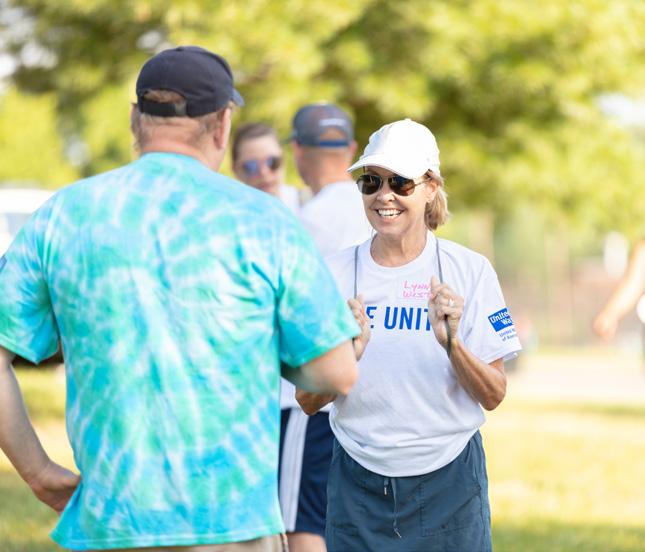
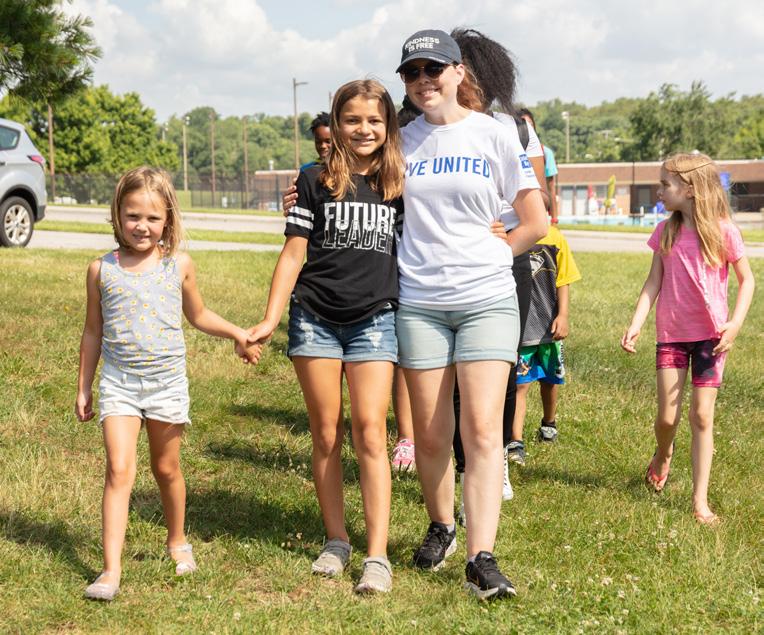
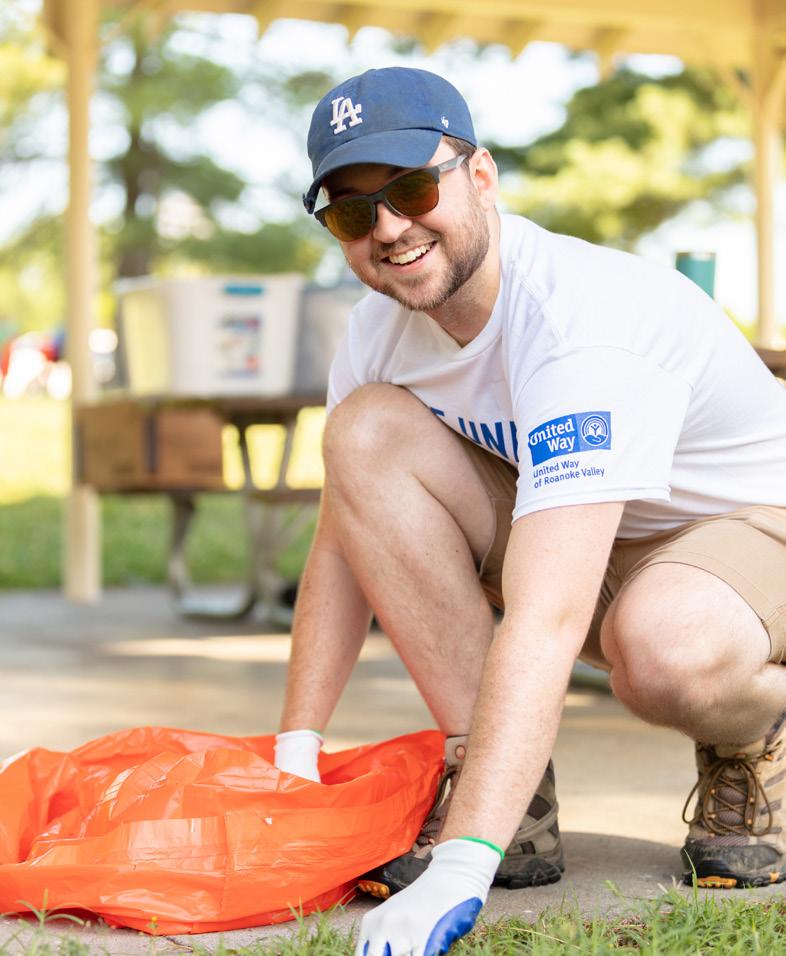
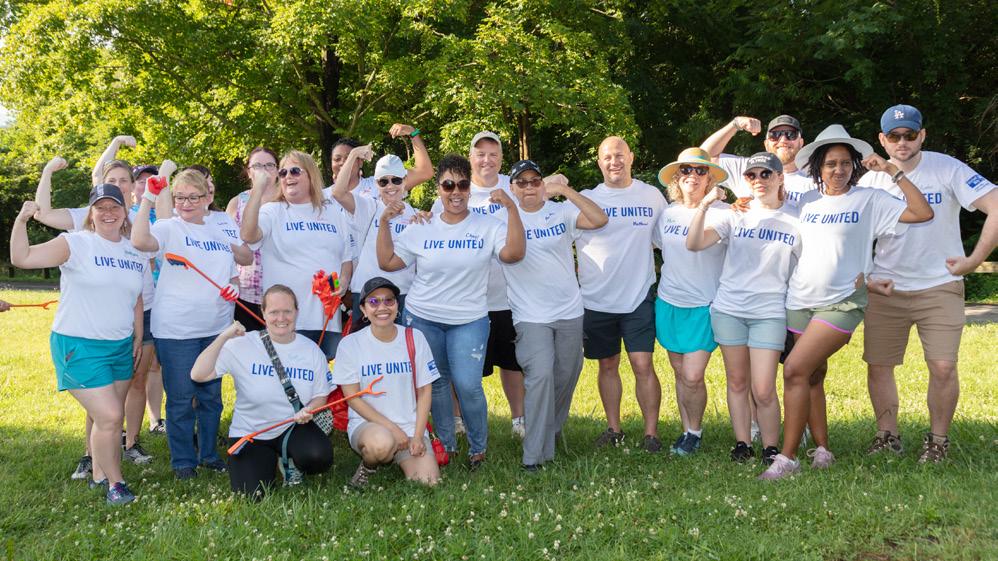
UWRV spent its Day of Action on June 17 at Washington Park. More than 80 volunteers picked up trash and stained the wood trails along the Greenway. It was a great way to connect the local neighborhood to the outdoors, and share the health and family benefits of this great resource. Thanks to all our volunteers who joined us and to our event co-hosts, Clean Valley Council and the City of Roanoke Parks and Recreation.
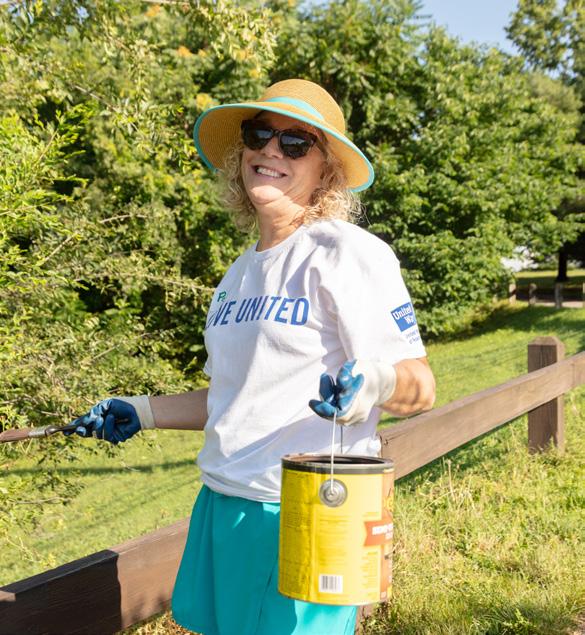
The essence of United Way’s work is the development of a coordinated system of care for families in the Roanoke Valley. Intentional collaborations among service programs are often catalyst for positive results, streamlined access to services technical assistance, and unprecedented creativity to incubate four partnerships that showcase the expertise and quality
The impact of these various UWRV-supported partnerships are best captured below through the real life stories of individuals and families that have benefited from the collaborative approach promoted by United Way of Roanoke Valley.
Onramp led by TAP was designed to enhance the performance of the workforce system to improve training and employment outcomes for families in poverty. While the workforce system works well for individuals with few barriers to employment, considerable anecdotal evidence suggests that poor families have difficulty accessing workforce system services and completing programs that could improve employment. To help more families successfully utilize the workforce system, UWRV made it possible for Onramp partners to improve policies and practices to better serve the target population; institute a coordinated referral system and increase utilization of supportive services needed to ensure that the target population is successful in achieving training/ employment outcomes.
A family was referred to Onramp during the holiday season. The mother lost employment a week before Christmas and was in the early stages of filing for unemployment with the VA Employment Commission. Staff communicated with the family about additional needs and supports available. The family was in need of support for rent, utilities, transportation, food, employment, as well as holiday assistance for the children. Onramp assisted with transportation by paying for their car insurance and car payment. The parent worked with a career coach through the Workforce Innovation and Opportunity Act to help with searching for a job. The parent was also referred to their case worker at VA Department of Social Services and food banks for food and emergency energy assistance. Through TAP, the family qualified for Roanoke Regional Housing Authority rent and utility assistance; the case manager used CarePortal to get assistance from local churches for household needs and Christmas gifts for the children. The mother started new employment in February 2022.
Strengthening Youth Opportunities for Success (SYOS) led by Family Service of Roanoke Valley is a collaborative of community after-school centers providing services and programs to enrolled youth and their families through academic enrichment, behavioral and emotional health services, positive youth development programming, and job skills curriculum in the after school centers throughout the city. This collaborative also aims to increase access to emergency services to improve housing stability and offering parent education opportunities addressing a full range of topics to promote healthy families. These services include advocacy, crisis stabilization, therapeutic supports and practical supports such as budgeting and scheduling.
Derick* is an eighth grader at the Community Youth Program who has attended the program since he was in elementary school. Derick is old enough to stay home alone in the afternoons; however, he lives in a high crime area and has a tendency to be lured into trouble by older neighborhood youth. His mother is concerned that Derick will struggle to stay on track if left home alone every afternoon while she is at work. Presbyterian Community Center offers programming to high school students, but only to those who engage with their services beginning in the lower grades. Thanks to the SYOS collaborative, Presbyterian Community Center has agreed to allow Community Youth Program high school students to transition to their programming at the beginning of 9th grade. As a result, Derick will be able to seamlessly transition into the PCC high school group, easing his mother's fears.
This will allow them to access the often multi-faceted support they need to achieve self-sufficiency. for clients, and deeper connections among partners. For the last four years, United Way has provided flexible funding, of service providers within our region. Onramp, SYOS, The Community Resource Hub, and Early Learners Collaborative.
The Community Resource Hub was born out of a series of local Community Health Needs Assessments which identified the importance of having a coordinated system of care to improve health outcomes in the area. The hub utilizes Community Health Workers (CHWs) that are employed by partnering organizations to address the underlying factors most determinant of health among low-income and vulnerable populations. UWRV investments covered the costs for partners to hire Community Health Workers, provided initial training for CHWs to achieve national certification, and supports the ongoing coordination and oversight of both partners and CHWs.
Ms. Doss, 59-year-old, struggles with mental health and substance use. She needed assistance applying for disability, affording her medications, and paying bills. Though the patient said she does not have any family, our CHW worked with her counselor and psychiatrist to ensure the disability letters of support were submitted and the Ms. Doss had all the necessary information.
Early Learners Collaborative (ELC) led by CHIP, a cross-generational, multi-agency approach with the primary goal of increasing third grade reading scores. The collaborative integrates community-driven, client-focused strategies that address social determinants of health that act as barriers to self-sufficiency for low-income families. The partnership provides an array of support to identified low-income children and families. Numerous partners integrate early learner’s strategies beginning prenatally through third grade, with adult caretaker strategies that strengthen the family and engage them as active partners in the implementation of the project.
A mom from our bilingual caseload had long neglected dental care provided at New Horizons thanks to the partnership established through the collaborative. The CHIP mom had stopped working and eating. CHIP's referral to New Horizons and the care provided has allowed her to return to both. Her daughter was also seeing our Mental Health Director for play therapy sessions. The availability of these options through the ELC is a good example of elevating the entire family.



